iPhone 5s preview: iSight camera combines improved sensor, smarter image processor, makes everyone a better photographer
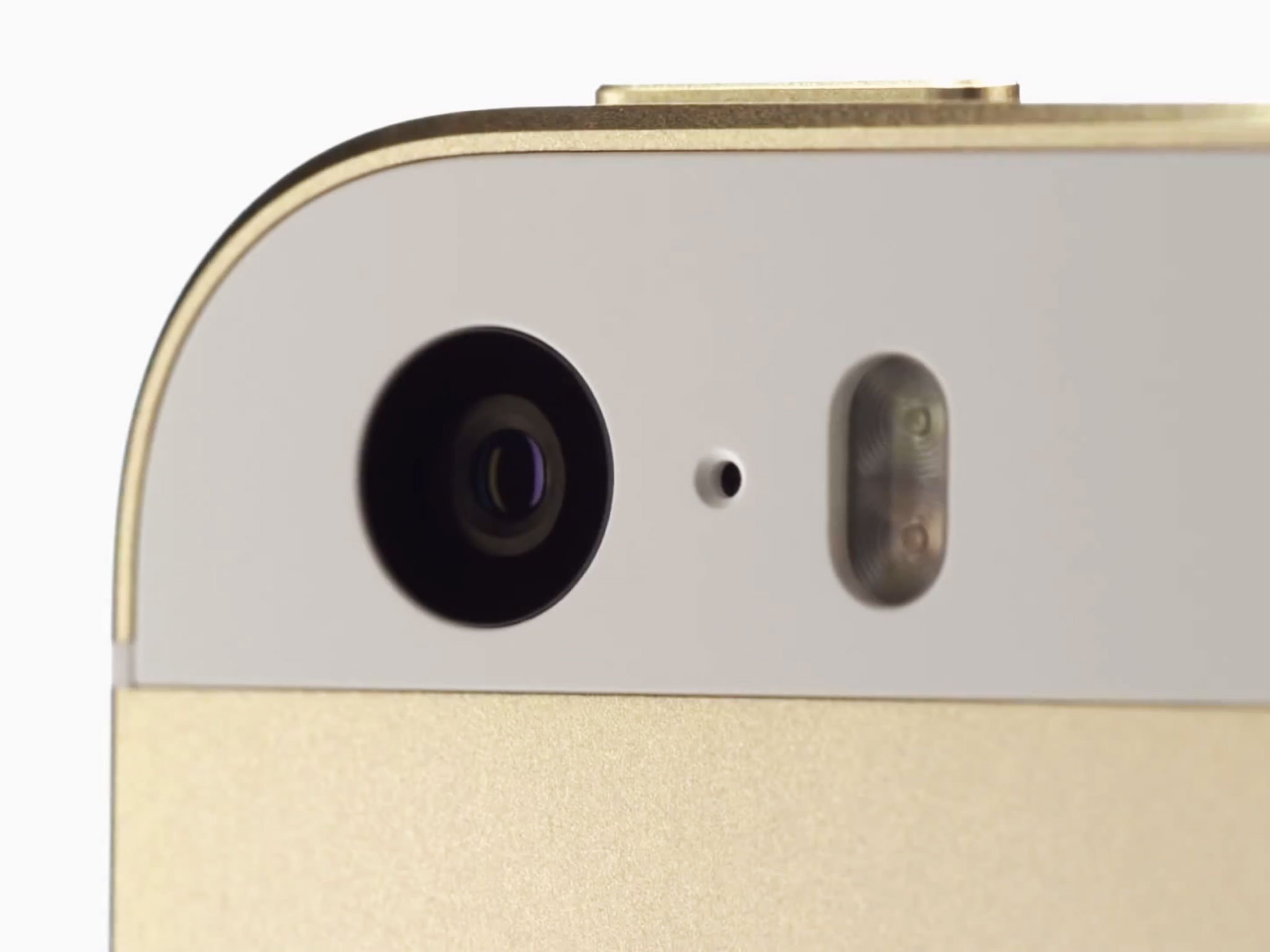
Everything you need to know about Apple's new f/2.2, 1.5 micron iPhone 5s iSight camera with improved A7 image signal processor and 120fps slo-mo video mode!
The iPhone 5s continues to showcase Apple's attention to their camera technology, iSight and FaceTime HD both. Once again hardware and software combine to create photos and video far better than the sum of their parts. That includes a bigger sensor with 1.5 micron pixels and an f/2.2 aperture. It's also includes an intelligent burst mode, a dual LED with white and amber elements, electronic image stabilization to reduce blur, and slow mo mode lets you record 720p video at a silky smooth 120fps. Here's how Apple describes it:
iPhone 5s features advanced technologies custom designed for the iSight camera’s hardware and software. So anyone anywhere can take an amazing photo at any time. It simply makes more sense to teach iPhone how to take a great picture rather than teach people how to be expert photographers. Here are just some of the capabilities of the new iSight camera.
The original iPhone camera wasn't great. It was 2 megapixels (2 million pixels), which was okay for normal, snap-shot sized photos, but like most camera phones at a time the overall quality was poor. It's only claim to fame was the interface and convenience that came from being built in. The iPhone 3G, which was more of a radio bump than a true next-generation device, kept the same camera. With the iPhone 3GS, however, Apple moved up to a 3mp sensor and added VGA video recording. VGA is 480p (640x480), a far cry from today's HD standards.
The iPhone 4 began Apple's shift away from megapixels and towards taking better pictures. Often times, to inflate megapixel counts, some cameras will simply chop the sensor into smaller and smaller pixels. That, however, causes each pixel to capture less light. What Apple did is increase the sensor to 5mp but keep the pixels the same size as the previous version, 1.75 microns. An f/2.8 aperture, they added a back-illuminated sensor (BIS), which moves wiring out of the way so it's even better at capturing light. A LED flash came along for the ride, for those situations where there simply wasn't enough natural light to get any usable picture, and high-dynamic range (HDR) was also added in a software update. That meant the iPhone could take three photos in rapid succession, one under exposed, one properly exposed, and one over exposed, and merge them together in software to reveal more detail in both dark and light areas than the camera could normally capture on its own. At the same time, Apple increased the video quality to 720p (1280x720), and introduced its first front-facing camera, albeit 0.3mp and VGA video.
The iPhone 4S went to to 8mp and 1080p. The pixel size dropped to 1.4 microns but the BIS was improved, the lens was widened, and the aperture was brought to f2.4 to improve low-light performance. Apple also added a fifth piece of glass for better sharpness, and an infrared (IR) filter for better color. They also started to focus on the image signal processor (ISP), a part of the new Apple A-series chipset dedicated to improving photography. It provided facial recognition, image stabilization, and better focusing and white balance.
The iPhone 5 took all of that and, amazingly, squeezed it down into a much thinner package. Arguably, Apple could have made a better camera by staying with the same depth as the iPhone 4S, but that wasn't the priority. Not only did they manage to keep the iPhone 5 camera every bit as as good, they managed to get in some improvements as well. A new dynamic low-light mode made it, theoretically, 2 f-stops better in certain situations. The 5 glass elements were more precisely aligned for even better sharpness, and the surface was switched to sapphire for increases strength and scratch-resistence. The front-facing camera also got a much bigger boost, to FaceTime HD 720p. Panorama mode came with the software, which allowed the iPhone to automatically stitch together a contiguous series of pictures into a single, combined, massive 23mp ultra-wide photo.
Photon collectors
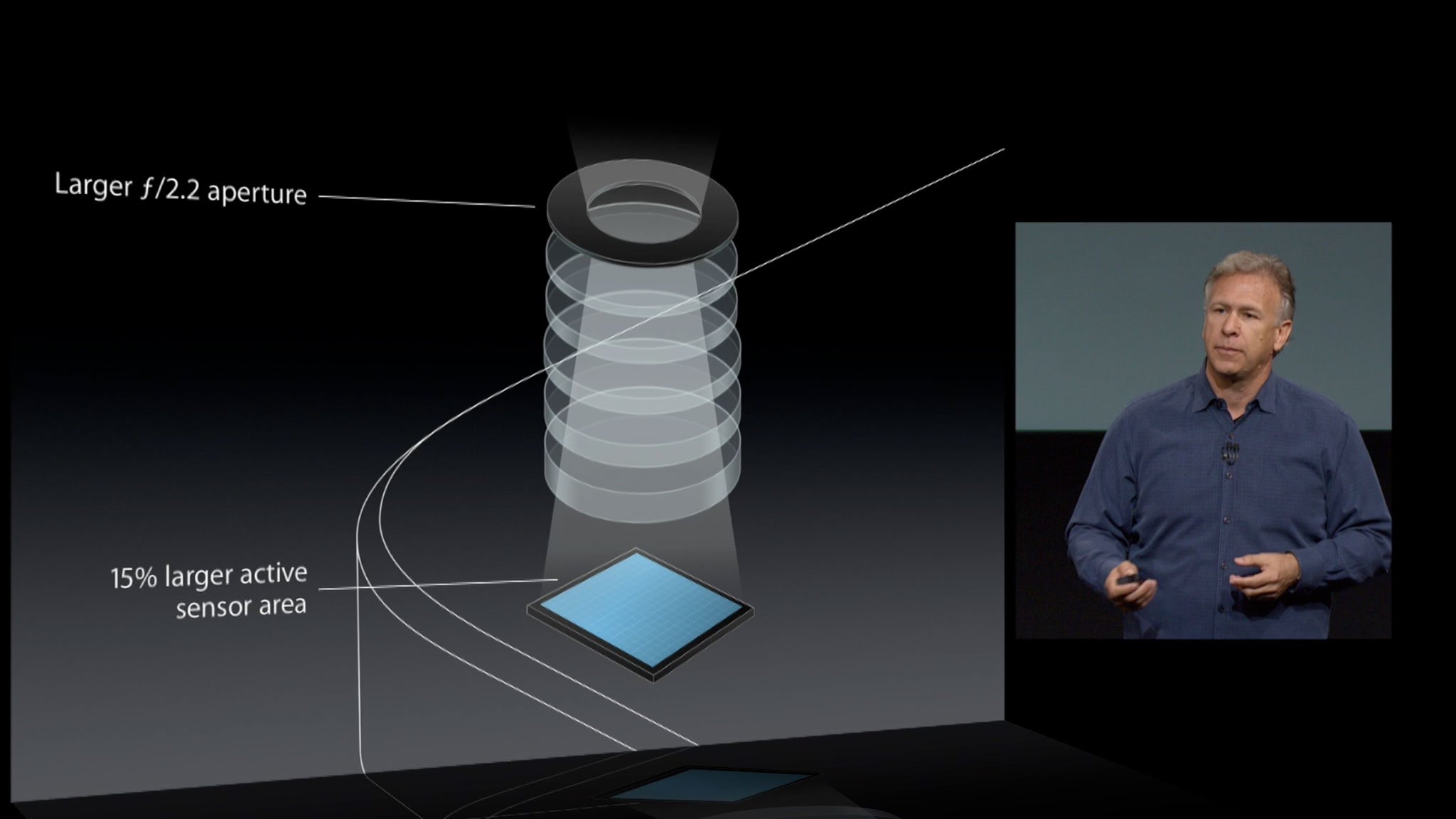
The iPhone 5s is still 8mp but once again Apple has increased the sensor size, this time by 15 percent. It brings the pixel size to 1.5 microns, and the aperture to f/2.2. All of that is designed to, you guessed it, allow more light to be captured. It's not as extreme on either end of the spectrum as the 13mp, 1.12 micron, f/2.2 Samsung Galaxy S4 or the 4mp, 2 micron, f2.0 HTC One, and as compromises go, it's a good one.
It's the ISP, stupid
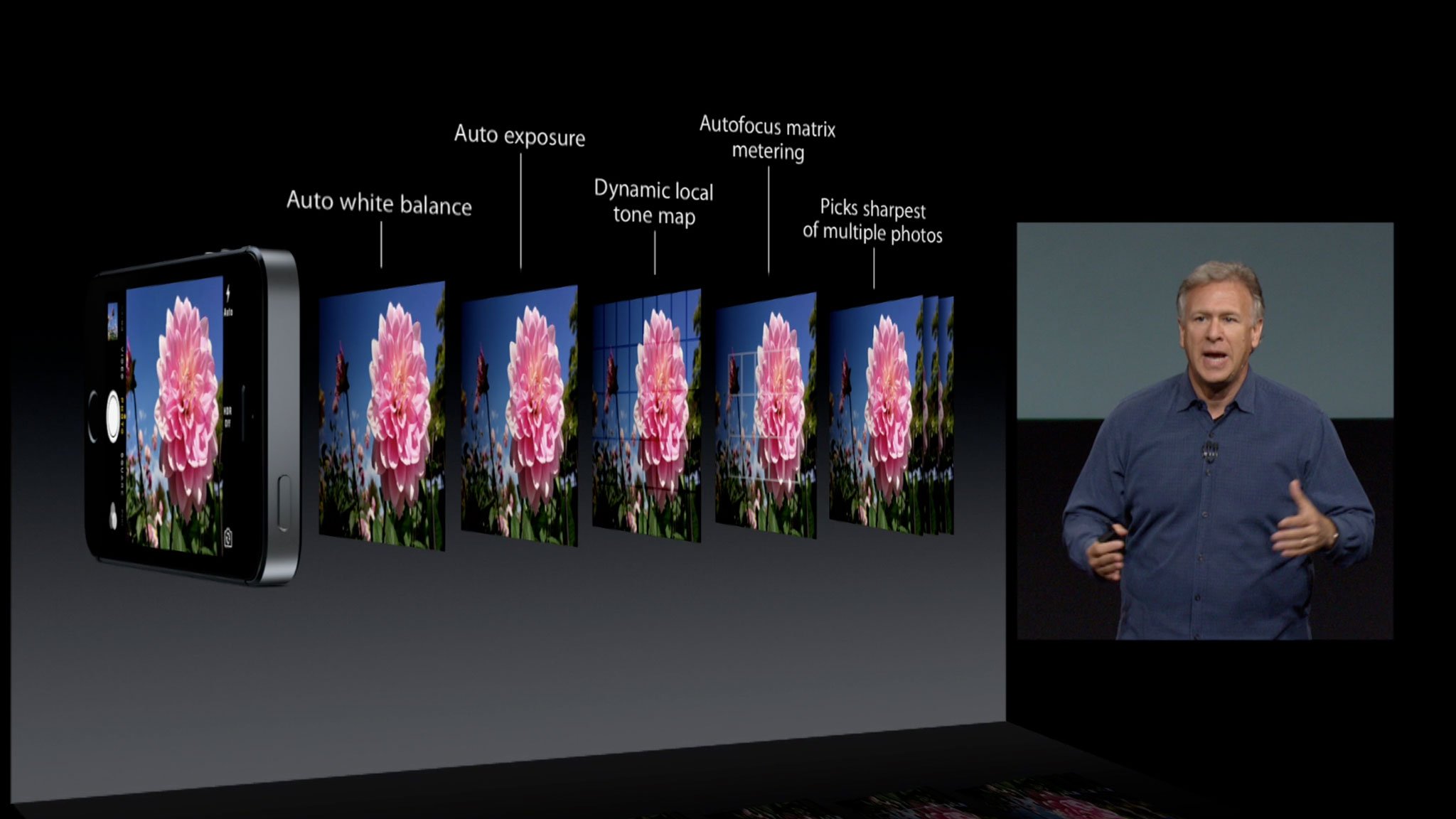
Thanks to the Apple A6 ISP, the iPhone 5 at a year old still managed to take better "every day" photos than newer phones with cameras that looked much better on paper. Even cameras with optical image stabilization (OIS), which out-shoot the iPhone in low-light, low-motion settings, couldn't beat it at general purpose photography. It turns out the chipset and the software inside are just as important as the glass on the outside.
Master your iPhone in minutes
iMore offers spot-on advice and guidance from our team of experts, with decades of Apple device experience to lean on. Learn more with iMore!
With the Apple A7, the ISP is getting a whole new range of functions. In addition to the auto white balance, auto exposure, and face detection features previously introduced, the A7 version now creates a dynamic local tone map to better balance highlights and shadows. It's not quite the same as HDR, but it does provide for images that are less likely to be swampy or blown out. The iPhone 5s camera also does autofocus matrix metering, which means it measures 15 focus zones to make sure it gets the best exposure possible. It'll also take bursts of multiple photos, analyze them in real-time, and present you with the sharpest one.
So, you get everything that was already fantastic about the iPhone 5 camera, but now with even better detail, focus, exposure, and sharpness. But wait, there's more.
Flash tones

Light isn't just light. There's sunlight and incandescent, tungsten and florescent, and combinations in between. Some are colder, with more of a blue or white cast to them. Some are warmer with more of a yellow or orange cast. A Standard LED flash can't match that range, so Apple has included two. In what Apple claims is a first, not just on phone cameras but any camera, True Tone has a white element for the cooler/blue end of the spectrum, and a yellow element, for the warmer/yellow end. When fired, they can intelligently adjust intensity and color temperature to any one of over a a thousand combinations in order to best match the scene being shot. That allows for better, more natural looking flash photos, especially where skin tone is involved. (See Apple's example above.)
Apple's dual LED True Tone flash isn't any brighter than the previous single LED. To go brighter, Apple would need to go to technology like Xenon. However, since mobile flash photography stinks no matter the quality of the tiny elements, and it shouldn't be used for anything other than capturing memories that can't be captured in natural light, getting better low-light capture is more important than getting a brighter flash.
When you do want to capture those memories, however, and you absolutely need a flash, True Tone should ensure you get the best result possible.
Auto not optical

The problem with low-light photography is that you want to keep the aperture open as long as possible to collect as much information as possible, but the longer the exposure time, the higher the chance your hands will shake or something in the scene will move, creating a blurry photo.
Optical image stabilization (OIS) is becoming more common thanks to phones like the HTC One and Lumia 920. It's a hardware solution that stabilizes the lens itself. OIS produces really good low light images with relatively little "noise", and does a good job minimizing the effects of your hands shaking, but is still subject to blur when something moves in the scene.
Apple is doing auto image stabilization (AIS) instead of OIS. It's a software solution that takes four photos with shorter exposures, selects the sharpest areas of each one, and then combines them into a single, final photo. In theory, this should accomplish pretty much the same thing as OIS, and could conceivably do a better job with slight motion in the scene. (See Apple's example above.)
I tend to like the idea of better capture up front. In a perfect world, we'd have both. We'll have to do a bunch of comparisons to find out how well AIS compares to OIS in the real world.
Action insurance
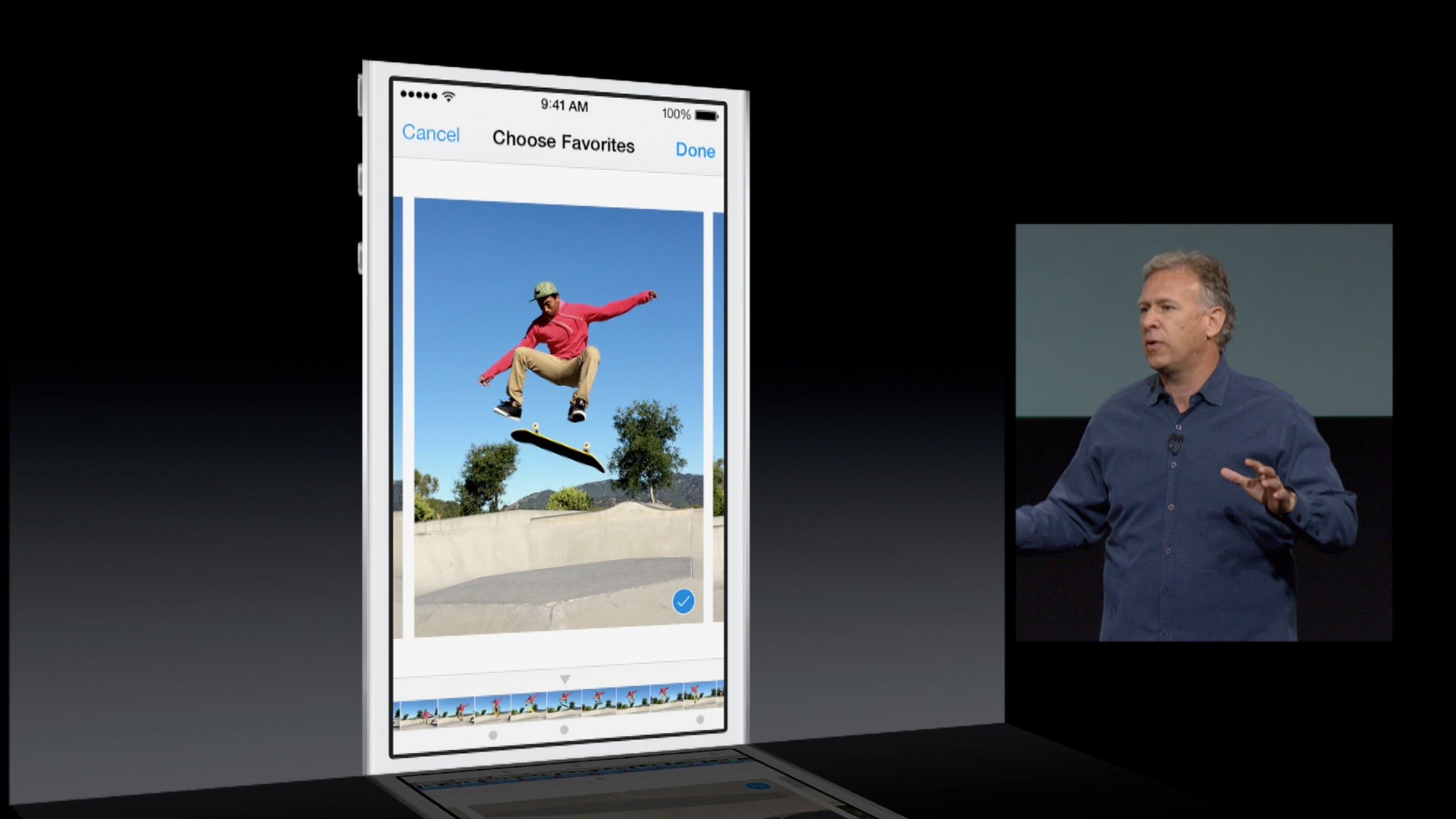
Apple's version of improving action photography is called Burst Mode, and it's so very typically Apple. With iOS 7 on the iPhone 5s with the Apple A7 chipset, you can hold your finger down on the virtual shutter button and take bursts of photographs at 10 frames per second (fps). So, holding your finger down for 2 seconds would take 20 photos. The ISP will then automatically, in real time, analyze all those photos and select the best shots. From there, the iOS 7 Camera Roll will present you with those selections, including major action moments if any, but also let you drill down into the entire series if you really want to.
So, to use Apple's example, wether you're trying to get that perfect shot of skate board acrobatics, or simply that one crisp moment amid the chaos of children, the odds are suddenly in your favor. You get the advantage of multiple shots, without any of the unmanageable overhead.
Slo Mo magic
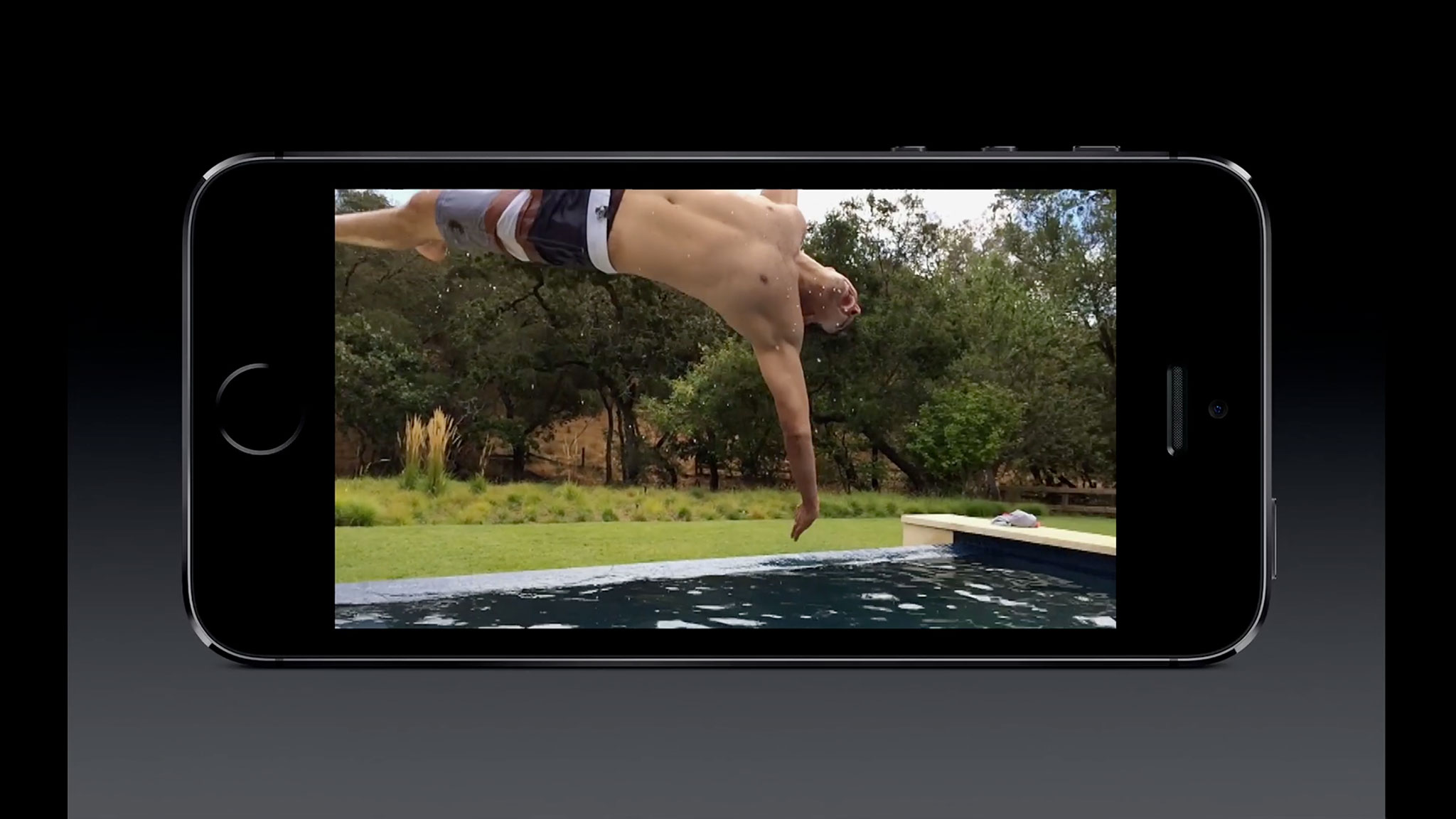
Speaking of typically Apple features, the video camera also gets its share of integrated automagical-ness with the iPhone 5s. While the now-standard 1080p 30fps recording mode remains, there's a new 720p 120fps mode as well, called Slo Mo. As the name suggests, it allows for silky smooth, quarter-speed video capture.
What's more, Apple's existing Camera app editing feature has been updated and now lets you choose at which points in a clip you want to enter and exit slo mo. So, you can show off the big action moment as someone flips off a board or skates towards the check or begins a leap towards the stars, and then crank it right back to normal speed just in time for the splash, smash, or crash conclusion. Yes, it's the John Woo feature. Try not to go overboard on the hair tosses.
There's also a 3x live video zoom. It's digital, not optical, so I'd be incredibly reluctant to use it, but it's there.
Panoramic dynamics
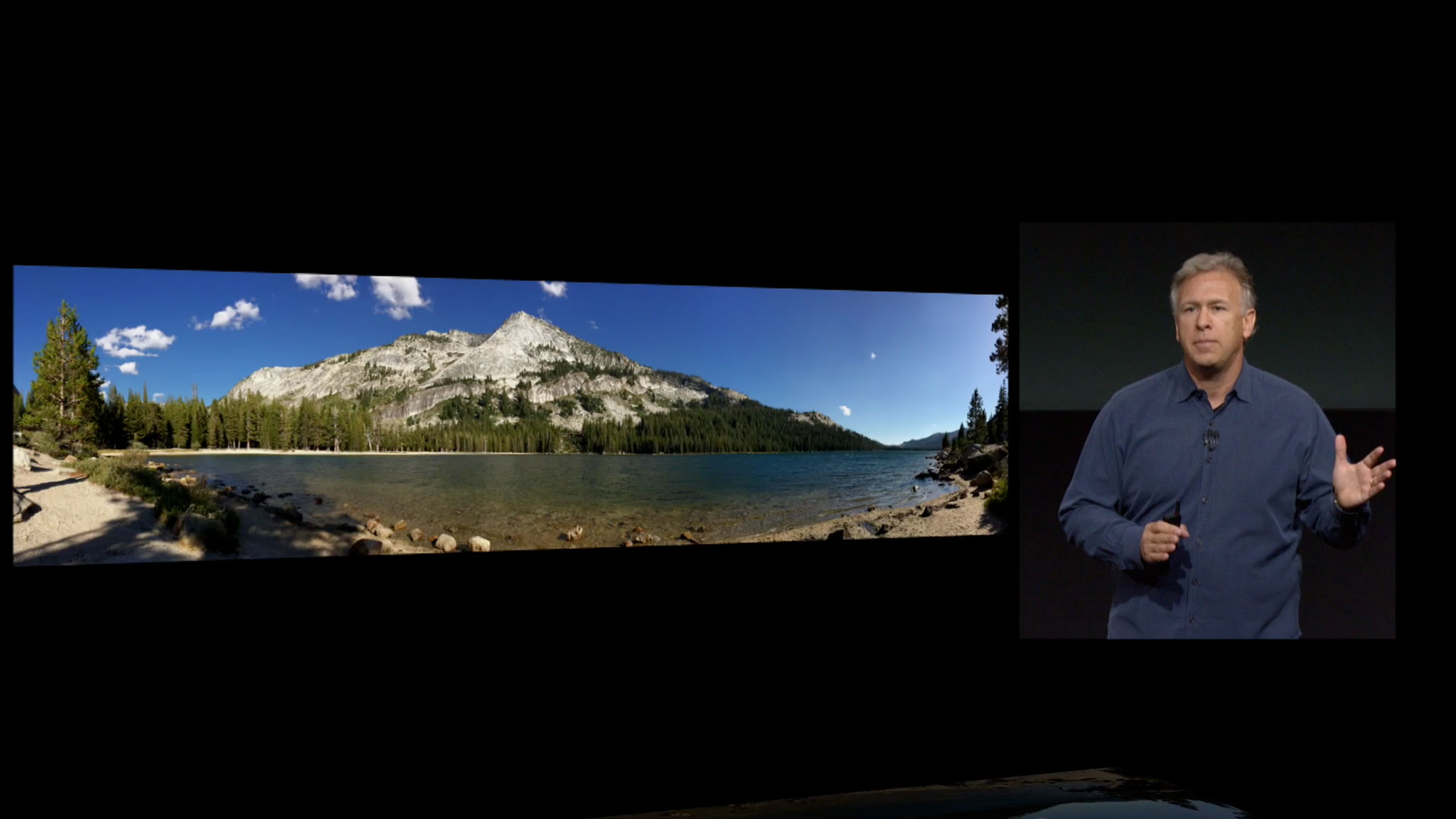
Apple introduced Panorama mode with iOS 6, which stitched together multiple images to produce giant 28 megapixel photos. However, it wasn't exactly a speedy process, and you were stuck with the initial exposure. So, if your scene got significantly brighter or darker while you were capturing it, you lost detail or experience blow outs.
With the iPhone 5s, panorama capture is now twice as fast, a full 30fps, and what's more, dynamic auto exposure means the camera will adjust to changes in lighting continuously while it captures.
That means better, faster panos for everyone.
FaceTime HD-er
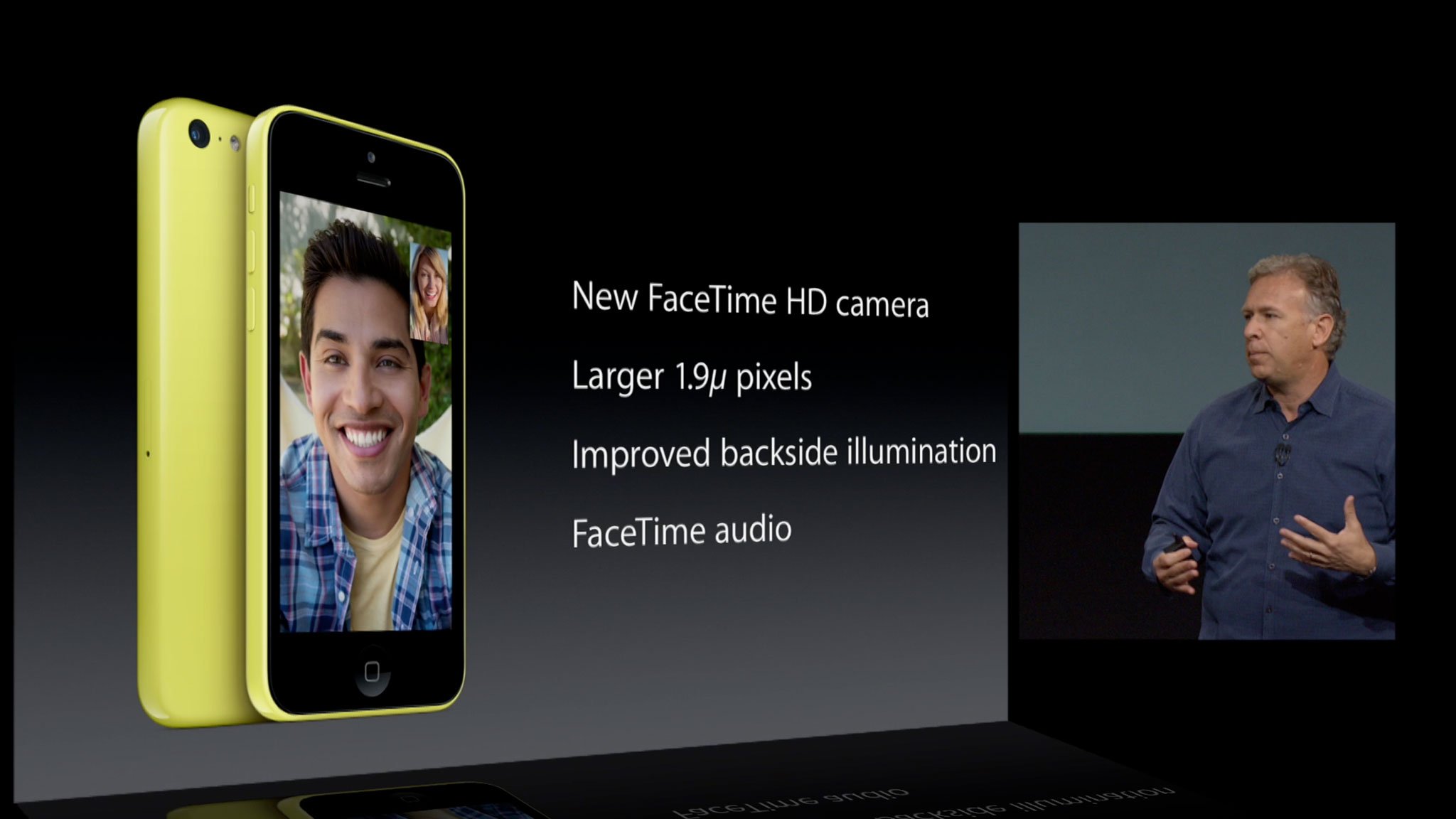
The iPhone 5s front-facing FaceTime HD camera has also gotten slightly better. The pixel size has been increased and the back illuminated sensor (BSI) has been improved. Here's how Apple describes it:
When you can’t be there in person, you can at least be there onscreen. Share some good news with your best friend or say “good night” to a traveling loved one with a FaceTime video call. The all-new FaceTime HD camera on iPhone 5s features larger pixels and an improved backside illumination sensor, so your smile lights up the room in almost any light. And because you can make audio-only FaceTime calls in iOS 7, your tête-à-tête doesn’t have to be face-to-face.
I couldn't find specifics on the improvements for the iPhone 5s, but Apple did list them for the iPhone 5c and my guess is they're identical. That means while the megapixel count stays at 1.2mp, the pixel size has gone up to 1.9 microns. Add that together with the new BSI, and everything from FaceTime video calls to selfies will get a big boost for low-light.
iOS 7 Camera app

In addition to all the exclusives detailed above, the iPhone 5s also gets all the new Camera app features coming in iOS 7. That includes the same design makeover, as well as Square mode and Filters. The bigger news, however, is what was taken away, including the signature shutter animation and button treatments are gone.
iOS 7 Photos app
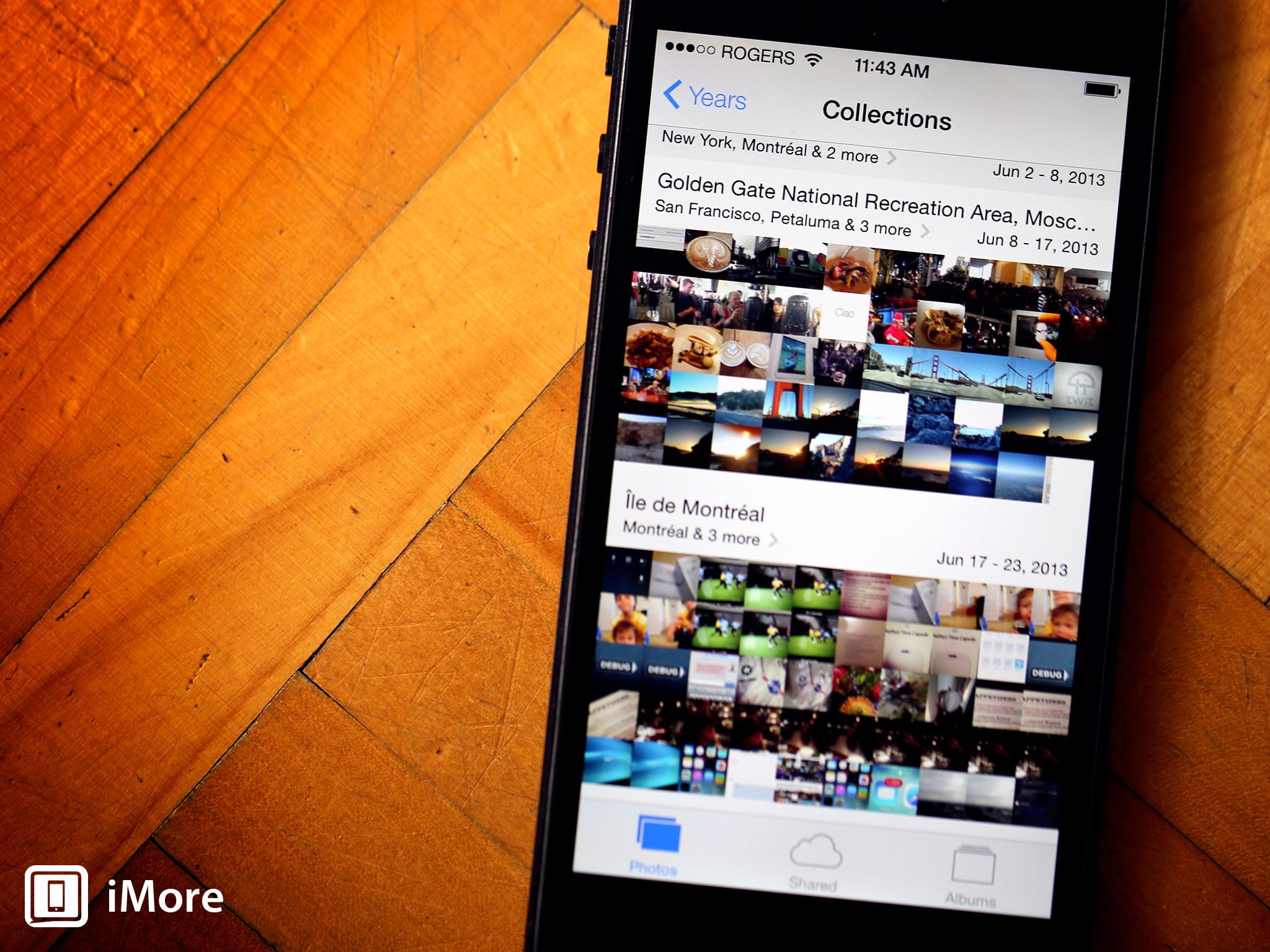
Just like its partner, the Camera app, the iOS 7 Photos app is newly redesigned, including not only all the new filters, but a newer, smarter way to organize all the photos that previously clogged up our Camera Roll - years, collections, and moments. Add to that a far more social version of Photo Stream, and things are fast approaching picture perfect.
- Complete iOS 7 Photos preview
- Complete iOS 7 Photo Stream preview
- iOS 7 vs. Instagram vs. Google+ vs. Twitter: Black & White photo filter comparison
Every day, every when

Apple's goal when it comes to mobile photography is apparent. They're not interested in the biggest glass or widest range of features. They want to help you take the best photographs you can, any time, and under any conditions you need to take them. If something magical happens, they don't ever want you to miss out on capturing it. They don't want you to have to fret with settings before hand and miss it, or be disappointed after the fact that it turned out too dark or too blurry, or too soon or too late.
That means they leave a considerable amount of technology on the table, but so far it's been difficult if not impossible to argue with the choices they've made. The iPhone 5s absolutely continues down that path. It makes very specific compromises, given the size, and more specifically the depth, of the device, and yet increases the scope of Apple's "everyday photos" mantra considerably.
Better balance, better exposure, better sharpness, better low-light, less color distortion, less motion blur, and less chance you miss your shot by mere moments.
More to come
If you're really into mobile photography and want to read more on the iPhone 5s camera, I'd recommend both of these pieces.
From Brian Klug, an optical engineer and mobile editor for Anandtech:
The end takeaway is better low light performance compared to the 5 at the same resolution, substantially better LED flashes when native light doesn't get you far enough, and of course those extra added features like burst mode and 120FPS video record.
From Matthew Panzarino, a photographer and senior editor at TechCrunch:
Note that Apple says ‘teach people how to be expert photographers’. That’s key because everyone with a smartphone is now — whether they see themselves that way or not — a photographer. Apple just sees the value in taking the burden of having to be an expert off of their shoulders. And it has the software and hardware prowess to (maybe) pull it off.
The iPhone 5s, iSight and FaceTime cameras and all, ships on September 20. Until then, keep up with all the latest news, and get involved in all the best conversations:
- Apple A7 chipset brings 64-bit, twice the speed, OpenGL ES 3.0 gaming
- Apple M7 coprocessor does all the fitness, health, and motion heavy-lifting
- iSight camera combines an improved sensor with a smarter image processor to make everyone a better photographer
- Touch ID makes fingerprint authentication mainstream

Rene Ritchie is one of the most respected Apple analysts in the business, reaching a combined audience of over 40 million readers a month. His YouTube channel, Vector, has over 90 thousand subscribers and 14 million views and his podcasts, including Debug, have been downloaded over 20 million times. He also regularly co-hosts MacBreak Weekly for the TWiT network and co-hosted CES Live! and Talk Mobile. Based in Montreal, Rene is a former director of product marketing, web developer, and graphic designer. He's authored several books and appeared on numerous television and radio segments to discuss Apple and the technology industry. When not working, he likes to cook, grapple, and spend time with his friends and family.
